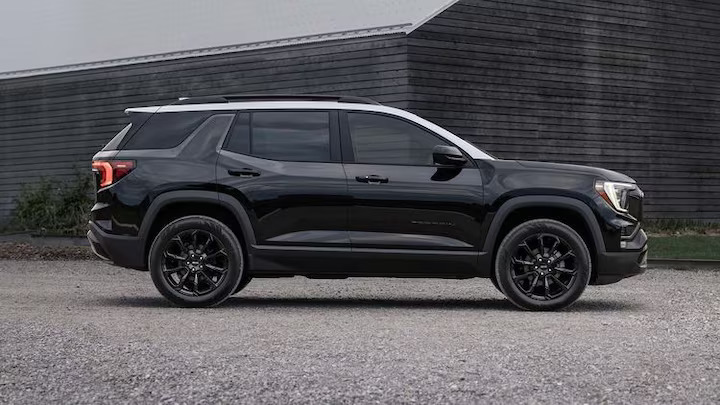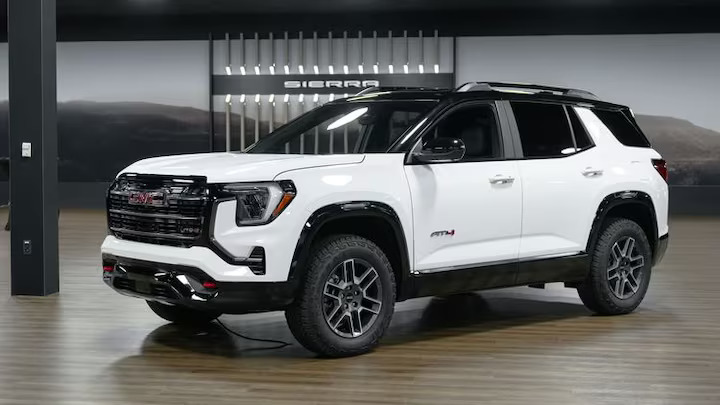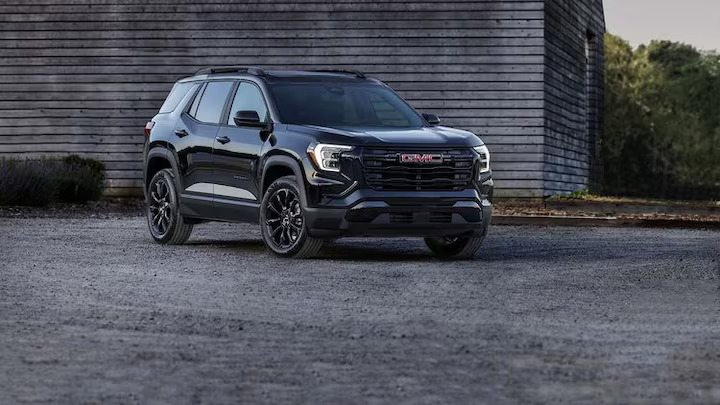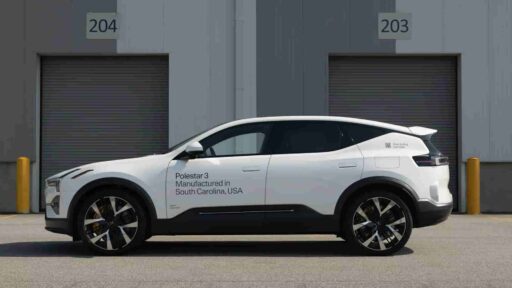Why opt for a GMC when it’s often considered just a glammed-up version of a Chevy? This question has long plagued General Motors as it tries to set its slightly more premium truck and SUV brand apart.
The challenge is particularly evident in how it distinguishes the third-generation 2025 GMC Terrain from its platform sibling, the 2025 Chevrolet Equinox. The key issue: can GMC convince the market to see the Terrain as something more?
A More Refined Starting Point GMC has dropped the SLE and SLT trims, replacing them with the more aspirational “Elevation” trim. This new base model comes with a higher standard of equipment, including features like remote start, adaptive cruise control, heated front seats, and a heated steering wheel—reflecting what most buyers were already adding to the previous SLE/SLT models.
READ MORE: Porsche Club Embraces Aloha Spirit on Hawaii’s Big Island

Also standard are an enhanced suite of 15 safety features, including blind-zone steering assist, improved automatic emergency braking that can now detect pedestrians, cyclists, and intersection hazards, automatic rear braking, and a side cyclist alert.
The options list for all Terrain trims has expanded to include offerings like a two-tone roof (silver over black or black over any other color), a presence-based power liftgate, a camera-based rearview mirror, and an eight-camera HD Surround View system.

The former Elevation package has been replaced with a Black package, which upgrades the standard 17-inch wheels to 19-inch black ones while blacking out the rest of the trim and badging. A Premium package swaps the cloth seats for Coretec faux leather, adds wireless charging, roof rails, a built-in garage door opener, and 19-inch silver wheels.
Subtle Powertrain Tweaks The Terrain continues to use the same 1.5-liter turbocharged four-cylinder engine, producing 175 horsepower and 203 lb-ft of torque. For 2025, the engine is paired with either a continuously variable transmission (CVT) for front-wheel drive models or an eight-speed automatic for all-wheel drive versions.

This change narrows the gap with the Equinox, which now shares the same powertrain, eliminating one of the previous distinctions between the two models. Despite the vehicle’s slight growth and a reduction in transmission complexity, fuel efficiency is expected to remain steady. Towing capacity remains modest, suitable for small trailers or jet skis, and the Terrain retains its driver-selectable all-wheel-drive system, which requires manual activation to send torque to the rear wheels—defaulting to front-wheel drive to improve fuel economy.
Bolder Styling The 2025 Terrain’s design updates aim to give it a more rugged appearance, drawing inspiration from the Canyon’s new front-end styling. The grille, headlamps, and fascia have all been redesigned, while the windshield is more steeply raked for better aerodynamics.
The rear window now sits more upright, contributing to the vehicle’s truck-like stance. Inside, the Terrain adopts a design language consistent with the rest of the GMC lineup, featuring a 15-inch vertical center screen borrowed from the GMC Acadia. This screen integrates a “floating” volume knob and a row of physical buttons for climate control at the bottom. The driver also benefits from an 11.0-inch reconfigurable instrument cluster, Google Built-In, 5G Wi-Fi, and the continued support for Apple CarPlay and Android Auto.

Every Terrain trim level includes soft, stitched materials on the dashboard, doors, and center console, accented with bright chrome strips across the dash and doors. While the Elevation model feels somewhat upscale, the Denali variant, with its additional leather and contrasting colors, begins to approach the level of luxury seen in competitors like the Lincoln Corsair—albeit with significantly less power. Notably, the awkward push/pull buttons that served as the shifter in the previous generation have been replaced by a more traditional column-mounted stalk.
Dimensionally, the 2025 Terrain grows by 2.1 inches in width and about half an inch in height, with track widths increasing by nearly 2 inches. However, most of this additional width is allocated to exterior styling rather than interior space, as passenger dimensions see only minimal changes. Cargo space behind the rear seats remains largely unchanged.
AT4 and Denali Trims For those looking for something beyond the Elevation trim, GMC offers the rugged AT4 and luxurious Denali variants. The AT4 is geared towards soft off-roading, with standard all-wheel drive, 17-inch all-terrain tires, a slight suspension lift, red tow hooks, skid plates, hill-descent control, and a terrain-select mode. Meanwhile, the Denali trim focuses on luxury, featuring all-wheel drive, plenty of chrome accents, 19-inch wheels (with 20-inch wheels optional), heated rear seats, and ventilated front seats.
Pricing and Availability The 2025 GMC Terrain will hit dealerships in late 2024, initially available only in the Elevation AWD trim. The front-wheel-drive version with the CVT is expected to follow in February, alongside the AT4 and Denali variants, which will be released as 2026 models. Given that a 2024 Terrain SLE equipped with the Convenience package costs $31,470, it’s likely the base price of the new front-drive Elevation model will start around $34,000, with the AWD option adding approximately $1,600. Stay tuned as we approach the release date for exact pricing and driving impressions, which will shed more light on whether the premium over the Equinox is justified by the enhancements made to the Terrain.
READ MORE: Apple Music and Rivian Bring Immersive Spatial Audio with Dolby Atmos to Rivian Drivers
Subscribe today for the freshest car news delivered to your inbox




